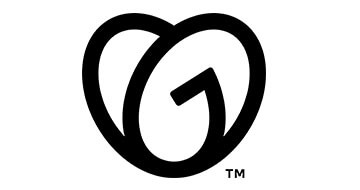
| Starting price | $5.99/mo |
|---|---|
| Pricing model | Per License |
| Free Trial | 30-day |
| Free Version | Yes |
Graphic design software allows designers, artists and creative professionals to bring their ideas to life with stunning images. Boost your creative efforts and discover our hand-picked selection of top-notch graphic design software.
Find the best value graphic design software at SaasGenius.
Finding the right graphic design software to suit your needs can be overwhelming. Our top-notch selection represents the pinnacle of value and quality, allowing you to unleash your creativity and effortlessly create visually stunning designs.

| Starting price | $5.99/mo |
|---|---|
| Pricing model | Per License |
| Free Trial | 30-day |
| Free Version | Yes |
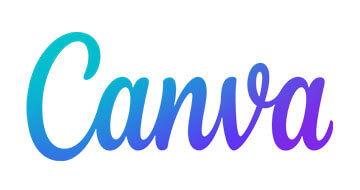
| Starting price | $12.99/mo |
|---|---|
| Pricing model | Per User |
| Free Trial | 30-day |
| Free Version | No |
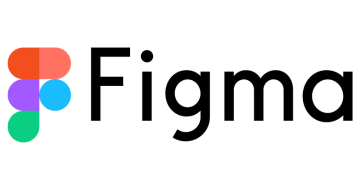
| Starting price | $15/mo |
|---|---|
| Pricing model | Per User |
| Free Trial | No |
| Free Version | Limited version |
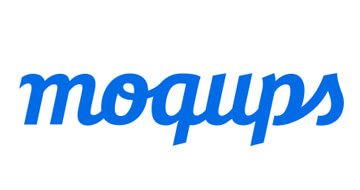
| Starting price | $17/mo |
|---|---|
| Pricing model | Per Seat |
| Free Trial | Free (limited storage) |
| Free Version | Yes |
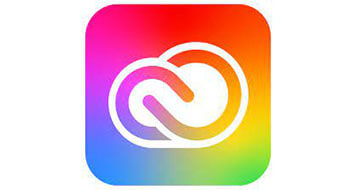
| Starting price | $52.99/mo |
|---|---|
| Pricing model | Per User |
| Free Trial | 30-day |
| Free Version | No |
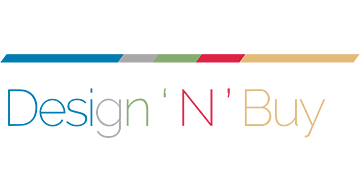
| Starting Price | Contact for price |
|---|---|
| Pricing Model | Per Feature |
| Free Trial | Yes |
| Free Version | Yes |
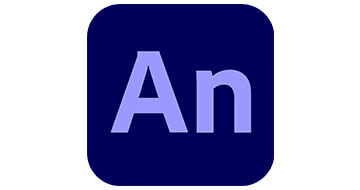
| Starting price | 31.49/mo |
|---|---|
| Pricing model | Per User |
| Free Trial | 7 days |
| Free Version | No |
Graphic design is an art where visual content is created to communicate a message. In order to do this, graphic design software is needed. This is because this software can provide artists with a range of tools in order to create their designs.
This can include typography, vector images, and the like. Additionally, graphic design apps can help users to meet their specific needs when it comes to creating elements within their designs.
Each solution does come with a range of different options though. For instance, the best logo design software will offer more painting and colorization options than the best interior design software, which will focus more on vector images and line work.
This makes it important for users to carefully select the software they need. On top of that, it’s not only big businesses using this type of software, but individuals too.
As such, there are a range of different options out there from free graphic design software with only basic functions to more costly graphic design software with a huge array of features.
Understanding the distinction between professional and consumer-grade tools significantly impacts your design capabilities and workflow efficiency. Professional graphic design software provides advanced color management, extensive file format support, and sophisticated collaboration features essential for commercial work.
Consumer applications prioritize ease of use and quick results, often sacrificing precision and professional features. While tools like Canva excel for social media graphics and basic marketing materials, they lack the technical capabilities required for print production, brand identity systems, or complex multi-layered compositions.
Professional software characteristics:
Consumer software benefits:
Modern graphic design workflows require multiple specialized applications working in harmony. Understanding each category helps build comprehensive creative capabilities.
| Software Category | Primary Function | Key Features | Best For | Professional Examples |
|---|---|---|---|---|
| Raster Editors | Photo editing, digital painting | Layers, filters, brushes | Photo manipulation, web graphics | Adobe Photoshop, Affinity Photo |
| Vector Graphics | Logo design, illustrations | Scalable paths, typography | Branding, print design | Adobe Illustrator, CorelDRAW |
| Layout Design | Multi-page documents | Master pages, grid systems | Magazines, brochures, books | Adobe InDesign, QuarkXPress |
| UI/UX Design | Digital interfaces | Prototyping, collaboration | App design, websites | Figma, Sketch, Adobe XD |
| 3D Graphics | Dimensional design | Modeling, rendering | Product visualization | Blender, Cinema 4D |
It is an incredibly useful software solution that can edit images. Images can be created from scratch, manipulated, and typography added. Here, we quickly outline the different functions that the best graphic design software can do.
Modern graphic design software provides sophisticated photo editing tools that go far beyond basic color correction. Professional applications support 32-bit color depth, advanced selection algorithms, and non-destructive editing workflows that preserve original image quality.
Content-Aware Technology: It enables intelligent object removal, background replacement, and seamless image extension. These AI-powered tools analyze surrounding pixels to generate realistic fill content, dramatically reducing manual retouching time.
Advanced Color Management: Ensures consistent color reproduction across different devices and media. Professional applications support ICC color profiles, soft proofing, and CMYK conversion essential for print production workflows.
Layer Compositing Systems: It allows complex image combinations with precise control over blending modes, opacity, and masking. These capabilities enable sophisticated photo manipulations and artistic effects impossible with traditional photography alone.
The best logo design software will utilize vector image editing, as this will allow users to adjust objects and elements without losing their shape or size. It’s perfect for creating multiple versions of the same thing without having to redraw.
Vector graphics excel in brand identity systems where consistency across applications is paramount. Logos, icons, and graphic elements maintain perfect quality whether displayed on business cards or building-sized signage.
Precision Drawing Tools: The tools provide exact control over anchor points, Bezier curves, and path operations. Professional applications offer advanced features like variable width strokes, pattern brushes, and symbol libraries that accelerate design workflows.
Typography Integration: It seamlessly combines text with vector graphics, supporting advanced features like text on paths, optical kerning, and OpenType font features. These capabilities are essential for brand identity and packaging design projects.
Adding text and notations is a must in the best interior design software in order to enable the diagrams to be understood. Most free graphic design software will offer a range of different fonts and text options.
Professional typography extends far beyond font selection to encompass spacing, hierarchy, and readability optimization. Advanced applications provide micro-typography controls that professional designers require for high-quality print and digital projects.
OpenType Support: It enables access to advanced typographic features, including ligatures, alternate characters, and contextual substitutions. These features enhance text readability and visual appeal, particularly in headline and display applications.
Paragraph Styling: Systems provide consistent text formatting across multi-page documents with support for style sheets, automatic hyphenation, and advanced justification controls.
Top software will also provide options for page layout including different page sizes, and the option for layers, transparency, and masks. All of this makes design so much easier.
Professional page layout software manages complex multi-page documents with master page systems, automatic page numbering, and sophisticated grid frameworks. These capabilities are essential for magazines, books, annual reports, and marketing collateral.
Master Page Systems: It ensures consistency across document sections while allowing page-specific customizations. Style sheets maintain typographic consistency while enabling global updates across entire documents.
Advanced Grid Systems: It provides precise alignment frameworks that improve visual hierarchy and readability. Professional applications offer baseline grids, column systems, and custom guide creation tools.
We follow a strict ranking method to provide unbiased recommendations for graphic design software. Our experts thoroughly analyze and evaluate each software based on key factors such as performance, ease of use, features, and support. Check out our methodology on our site and discover the top-rated graphic design software that best fits your needs.
Our comprehensive evaluation process examines multiple factors that impact real-world design productivity and professional workflows.
Technical Performance Assessment: Includes rendering speed, file handling capabilities, memory efficiency, and stability under professional workloads. We test with large files, complex compositions, and resource-intensive operations to evaluate real-world performance.
Feature Completeness Analysis: Evaluates toolset depth, workflow efficiency, and integration capabilities with other professional applications. We assess both core functionality and specialized features required for different design disciplines.
User Experience Evaluation: Examines interface design, learning curve requirements, and workflow optimization. Professional designers require efficient tools that don’t impede creative processes or require excessive setup time.
Collaboration and Integration Testing: Analyzes compatibility with project management software, version control systems, and team collaboration workflows essential for professional environments.
The best interior design software has a wide array of different functions and features. It should not be solely for image editing. The best graphic design apps will have a lot more, as well. Not only should it enable drawing and vector art manipulation, but it should also enable individuals and companies to create and maintain brands through consistent software tools. Below are some main features found in the best graphic design software.
AI-powered features increasingly accelerate routine design tasks while enhancing creative capabilities. Modern applications integrate machine learning for content generation, automated optimization, and intelligent design assistance.
Generative Design Tools: Tools create variations, suggest layouts, and generate content based on design briefs. These capabilities enable rapid exploration of design concepts while maintaining human creative control over final decisions.
Automated Image Processing: It handles background removal, object selection, and color matching with increasing accuracy. AI-powered tools reduce manual work while enabling designers to focus on creative decision-making rather than technical execution.
Smart Template Systems: It adapts layouts based on content requirements, automatically adjusting spacing, hierarchy, and visual balance. These features particularly benefit teams creating consistent marketing materials across multiple formats.
Modern design workflows require seamless collaboration across distributed teams and multiple time zones. Professional applications integrate communication software capabilities directly into design environments.
Real-Time Co-editing: It enables multiple designers to work simultaneously on projects with live cursor tracking and conflict resolution. Version control systems maintain project integrity while supporting parallel development streams.
Comment and Review Systems: It streamlines feedback collection and approval processes with contextual annotations, approval workflows, and revision tracking. These features reduce email chains and meeting requirements for design projects.
Asset Management Integration: It synchronizes design resources across team members with automatic updates, usage tracking, and licensing compliance. Centralized asset libraries ensure brand consistency while reducing duplicate work.
Professional design software provides sophisticated output options optimized for different media and platforms. Automated optimization reduces file sizes while maintaining quality appropriate for each use case.
Multi-Format Export: It generates appropriate file types for print, web, mobile, and social media applications from a single source file. Batch processing capabilities enable efficient asset generation for marketing campaigns.
Platform-Specific Optimization: It automatically adjusts color profiles, resolution, and compression settings based on the intended output medium. These features ensure optimal quality while meeting technical requirements for different platforms.
The type of software you need will depend, not only on the size of the company but also on the level of proficiency and what users specialize in. This is because there is some graphic design software that specializes in certain elements of design such as focusing on interior design, while others focus on painting. What you plan to use the software for is the first thing you should be thinking about. In the section below, we take a look at some of the companies that need to carefully consider what software they need to use.
There is a growing number of freelancers out there in the world of graphic design. This means that these professionals need to be able to access good quality software programs. However, they won’t need quite the same level as a business or studio. This means that it’s possible to take on a smaller package geared towards individual use.
Independent designers require cost-effective solutions that provide professional capabilities without enterprise overhead. Subscription costs significantly impact solo practitioners, making value proposition evaluation critical for sustainable businesses.
Budget-conscious recommendations include Affinity Suite for one-time purchase value, GIMP for zero-cost professional editing, and Canva Pro for template-based efficiency. These options provide professional results while managing subscription expenses.
Scalability considerations ensure chosen software can grow with expanding client needs and project complexity. Starting with capable applications prevents costly migrations as businesses develop.
One of the larger groups that create digital graphics, companies, and businesses such as this often need a much more comprehensive software. The best interior design software programs will offer the company the chance to store huge file sizes in a range of file types for export, as well as integrate a wider range of different editing tools into their solution.
Professional agencies require comprehensive software ecosystems supporting complex projects, multiple team members, and diverse client requirements. Integration with project management software becomes essential for coordinating large-scale productions.
Enterprise feature requirements include advanced color management, extensive file format support, robust collaboration tools, and integration capabilities with client systems. Professional support and service level agreements ensure uninterrupted project delivery.
Team collaboration needs demand real-time co-editing, version control, asset management, and approval workflow systems. Cloud-based solutions enable distributed teams while maintaining project security and intellectual property protection.
Similarly, publishers, sales, and marketing professionals also require a lot of extras in the best logo design software. It’s important that the software can handle large files and complex designs. It should offer the ability to draw, and to use vectors for rescaling, repeating, and repurposing the same designs in different formats.
Marketing teams require efficient workflows for producing consistent brand materials across multiple channels and formats. Template systems and automation capabilities significantly impact productivity for recurring design tasks.
Brand consistency tools ensure visual consistency across campaigns while enabling rapid content generation. Style guide integration and approval workflows prevent brand guideline violations in fast-paced marketing environments.
Multi-channel output capabilities generate appropriate assets for print, digital, social media, and video applications from single source files. Automated resizing and optimization reduce manual work while maintaining quality standards.
Academic environments benefit from software that teaches fundamental design principles while providing industry-relevant experience. Educational licensing often provides significant cost reductions for institutional purchases.
Learning-focused applications combine professional capabilities with educational resources including tutorials, project templates, and guided workflows. These features accelerate skill development while teaching industry best practices.
Industry preparation ensures students gain experience with professional tools and workflows they’ll encounter in their careers. Exposure to industry-standard software improves employment prospects and professional readiness.
Depending on the software and the level of the business, the best graphic design software can actually be quite pricey. Many options do have lengthy trial periods allowing you to test out the product for free, usually for a couple of months. However, for some packages, you don’t get the full version. For the most part, buying this type of software is going to set you back, usually around at least $500.
The graphic design software market has shifted predominantly toward subscription models, offering lower entry costs but higher long-term expenses. This transition reflects software complexity increases and ongoing cloud service integration.
Subscription advantages include access to latest AI features, cloud collaboration tools, regular updates, and extensive asset libraries. Professional teams benefit from predictable monthly expenses and immediate access to new capabilities.
Alternative pricing options remain available through companies like Affinity (perpetual licensing) and open-source solutions like GIMP. These options appeal to cost-conscious users and organizations with stable software requirements.
Professional graphic design budgets must account for primary applications, complementary tools, training costs, and hardware requirements. Comprehensive planning prevents unexpected expenses and workflow disruptions.
Primary Application Costs: Varies from free (GIMP, Krita) to premium subscriptions (Adobe Creative Cloud at $54.99/month). Professional needs typically require investment in capable applications with comprehensive feature sets.
Complementary Tool Requirements: Includes font licenses, stock photography subscriptions, and specialized plugins. These costs accumulate quickly but provide essential capabilities for professional workflows.
Training and Support Investments: Ensures team productivity and maximizes software capability utilization. Professional training often provides a rapid return on investment through improved efficiency and expanded capabilities.
The graphic design software landscape continues evolving rapidly, driven by artificial intelligence, cloud computing, and collaborative workflow requirements.
AI capabilities increasingly automate routine tasks while enhancing creative possibilities. Machine learning algorithms generate design variations, optimize layouts, and provide intelligent assistance throughout creative workflows.
Generative design tools create multiple design options based on brief parameters, enabling rapid concept exploration. These capabilities don’t replace human creativity but accelerate ideation and iteration processes.
Automated optimization adjusts designs for different platforms, formats, and accessibility requirements without manual intervention. AI-powered tools ensure technical compliance while maintaining creative intent.
Web-based applications increasingly provide professional capabilities without local software installation. Cloud-native tools enable seamless collaboration while reducing hardware requirements and maintenance overhead.
Real-time collaboration features support distributed teams with live editing, commenting, and approval workflows. These capabilities become essential as remote work continues to expand across creative industries.
Cross-device compatibility enables design work across desktop, tablet, and mobile devices with synchronized project states. Flexible workflows accommodate different working styles and technical constraints.
Modern graphic design software increasingly integrates accessibility checking and inclusive design capabilities. These features ensure designs work effectively for diverse audiences while meeting legal compliance requirements.
Automated accessibility auditing checks color contrast, text readability, and layout accessibility throughout design processes. Early detection prevents costly revisions while improving user experience for all audiences.
Inclusive design templates provide starting points that consider diverse user needs and cultural sensitivities. These resources help designers create more effective and broadly appealing solutions.
Graphic design software selection significantly impacts creative productivity, project quality, and long-term business success. The best applications provide comprehensive capabilities while fitting budget constraints and workflow requirements. Whether you’re launching a freelance career, managing an agency, or supporting marketing initiatives, choosing appropriate design tools establishes the foundation for professional achievement.
The rapid evolution of design technology requires ongoing evaluation of software capabilities and market developments. Regular assessment ensures workflows remain efficient and competitive while taking advantage of emerging capabilities like AI assistance and cloud collaboration. Success ultimately depends on matching tool capabilities with creative goals and professional requirements.